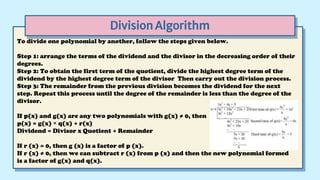This mathematics portfolio focuses on polynomials, covering their definitions, classifications, degrees, terms, types, graphs, zeroes, factorization, and algebraic identities. It explains key concepts such as the structure of polynomial equations and the methods for determining zeroes and factors. The document includes examples and graphical representations to illustrate these concepts effectively.























